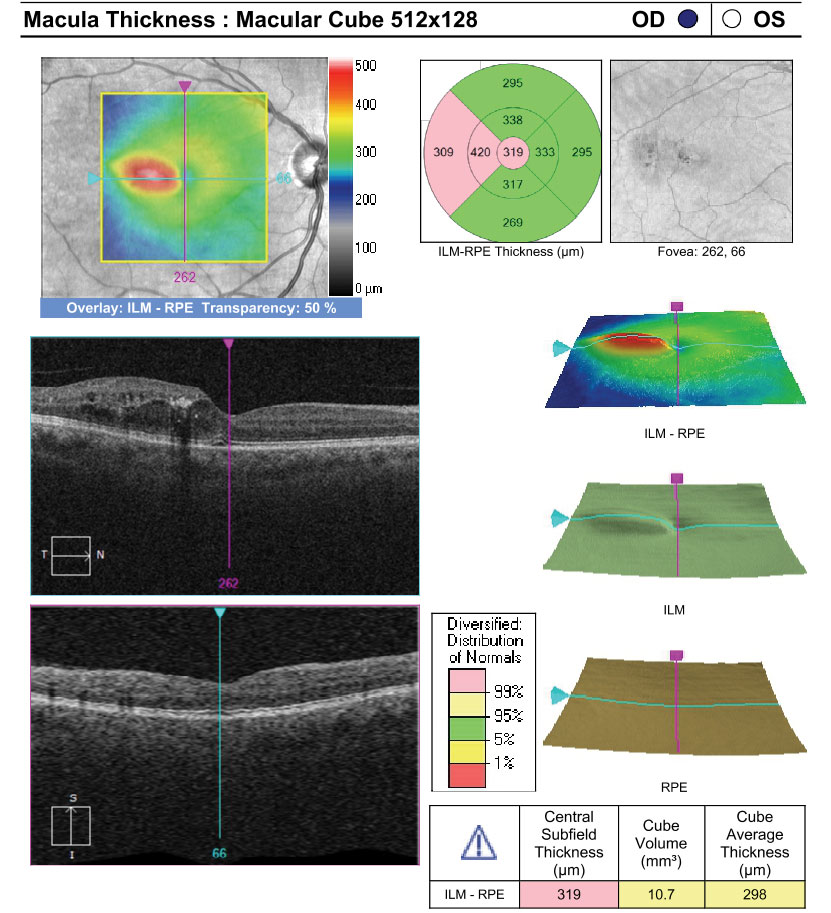 |
|
DME patients with initial choroidal subfoveal thicknesses under 220µm received fewer injections and showed a more significant improvement in BCVA from baseline to post-treatment. Photo: Anna Bedwell, OD. Click image to enlarge. |
The one-size-fits-all approach rarely applies to the rules of medicine. Patients respond differently to the same treatment based on various factors such as the nature and severity of their condition, as well as their unique anatomy. A new study found that this is also true for patients with diabetic macular edema (DME) on intravitreal anti-VEGF therapy. The researchers observed that treatment needs seem to vary depending on the choroidal thickness of the patient.
The retrospective study included 92 patients (mean age: 62) diagnosed with DME who were being treated with anti-VEGF injections. The patients were divided among three groups based on the initial subfoveal choroidal thickness (SFCT): group one, which included 35 patients with SFCT≤220µm; group two, which included 27 patients with SFCT between 220µm and 270µm; and group three, which included 30 patients with an initial SFCT greater than 270µm.
The data revealed that patients in group one received significantly fewer anti-VEGF injections on average than patients in groups two or three (5.4, 7.1 and 7.0, respectively). Also in group one, the researchers observed that best-corrected visual acuity (BCVA) significantly improved after treatment compared with baseline; however, this wasn’t the case in the other two groups, which showed no significant change in BCVA post-treatment.
“After treatment, central macular thickness decreased significantly in group one compared with baseline, while central macular thickness did not show a significant change from baseline in group two and group three after treatment,” the researchers reported in their paper on the study’s findings, published in BMC Ophthalmology. They added that after treatment, temporal macular thickness was higher in group three than in groups one or two, despite patients in this group having the highest mean number of injections. The researchers hypothesized in their paper that this “suggests that increased choroidal thickness may be an indicator of the need for anti-VEGF injections and resistance to therapy.”
In summary, the study authors noted that “better visual gain was achieved with fewer intravitreal anti-VEGF injections in DME patients with thin choroidal thickness.” Therefore, for DME patients with a thin choroid, the researchers argued that fewer visits and injections may help with patient compliance while decreasing treatment costs. They also suggested that larger studies should look into the role of subfoveal choroidal thickness as a prognostic factor in the application of anti-VEGF for treating DME.
Savur F, Kaldırım H, Atalay K, et al. Treatment results of diabetic macular edema with different choroidal thickness with intravitreal anti-vascular endothelial growth factor. BMC Ophthalmol. December 22, 2022. [Epub ahead of print]. |


